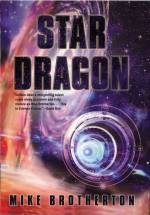Search
A Brief History of Dark Energy
November 9th, 2007
There was a time in the 1980s in comic books where superheroes had to be retooled to make them cooler, often by adding “dark” in front of their name. For example, Frank Miller’s graphic novel The Dark Knight Returns helped revive Batman as a leading character.
In the 1990s, that trend hit cosmology with “dark energy.” Perhaps I’m being a little unfair, since there was a precedent set already with dark matter, but I’m jumping ahead already. Let’s take a few steps back to look at the history of dark energy and what it means in a cosmological context.
The dynamics of the universe, how it expands, contracts, or doesn’t, is governed by Einstein’s theory of general relativity, and more specifically by something called the Friedmann equation. This equation is basically just a fancy statement of energy conservation and is the equivalent to the more mundane case of tossing a ball in the air. If you give it a lot of energy, it zooms off into space. (OK, not you in this case, but Superman.) If you don’t, it slows down, stops, and falls back to Earth like the Hulk taking a big but not infinitely super leap (jumping to infinity and beyond would have made that comic/movie pretty damn short).
So what determines the energy and the effective gravity pulling things back together? Well, it comes from a combination of the equivalent energy density of things (e.g., matter and radiation) and their pressure. Matter and energy we under stand, but general relativity allows for other components: a constant term called the “cosmological constant” and a complicating curvature term, since spatial geometry need not be flat necessarily. Sorry if this is getting complicated, but it is, intrinsically, a little bit.
The so-called cosmological constant term expresses in some poorly understood manner the energy density of space, and can act as extra gravity or as a type of anti-gravity. It has negative pressure, that is, it exerts a tension through space, and Einstein called it his “greatest blunder.”
He believed that the universe was static, eternal, and he solved the Friedmann equation with a special value of the cosmological constant that perfectly balanced gravity. This was a decade before Hubble and others discovered the expansion of the universe, which Einstein might have predicted if not for his bias. Einstein’s static universe also suffers from being unstable, since the cosmological constant would be smooth over all space while the effects of matter are concentrated, and locally the balance could never be perfect and the universe would not remain static forever.
With the expansion of the universe confirmed and no other evidence in support of a cosmological constant, the idea was set aside as unnecessary. Alan Sandage, Hubble’s successor, and others, proposed various tests to look for the deceleration of the universe. Even if the Hulk jumped off into deep space, Earth’s gravity should slow him down, a little, over cosmic time.
All it would take, in Sandage’s estimation, was to measure the distances to objects some five billion plus light years away with an accuracy of better than ten percent. Well, it turns out that this is really hard to do. The technique usually employed is that of the so-called “standard candle.” You take objects of known brightness and see how bright they look at such extreme distances. In a decelerating universe, at a given distance they should look a little brighter than you might expect based on a steady expansion rate. Maybe Superman, or Reed Richards with technology unknown in the real world, could see individual objects that far away. For the most part, even with the Keck telescope, we can’t. Best we can do is entire galaxies, quasars, supernovas, and gamma ray bursts.
It wasn’t until the 1990s that we learned to determine the intrinsic brightness of any of these well enough to conduct Sandage’s test.
There were a couple of competing supernova groups then working on the dual problems of the calibration of supernova luminosity and the detection of supernovas at such extreme distances. A young post-doc in California, Adam Reiss, was the first to put together the data with the appropriate calculations and to measure the deceleration. Except it wasn’t there.
The distant supernovas were fainter than expected.
The universe appeared to be accelerating.
In some sense, Reiss was just a person at the right place at the right time to conduct the test and gain fame and fortune for this unexpected discovery (and he has won some big money prizes, been featured in TIME magazine and other places). But in another sense, he has been the right person. Correctly assuming that the community would be skeptical, he performed a tour de force trouble shooting all the possible objections to his conclusions, and they have held up over the last decade. He’s followed up the work and extended the results, and they continue to look real.
So, what’s up with this acceleration? For one thing, it hasn’t surprised everyone. The amount of the acceleration implies an energy density that, together with the known matter, makes the universe “flat.” That is, it obeys Euclidean geometry on large scales. Theorists like Stephen Hawking (and Dr. Stephen Strange, perhaps?) already believed the universe to be flat on other grounds, and with the observers claiming insufficient matter, something like this energy density associated with, well, nothing, fit the bill. Like dark matter, exerting its effects without being seen, this component was dubbed “dark energy.”
And mathematically, the dark energy can be described exactly by the cosmological constant. Even so, we don’t know what it is physically, if that interpretation is correct. It could be vacuum energy, associated with virtual particles appearing and disappearing in such short periods of time that they can’t be seen. Our current understanding of vacuum energy, however, suggests that this explanation is something like 150 orders of magnitude off. That’s pretty wrong for astronomers or the Tick. Even the Dark Tick.
Particle physicists have suggested another component of the universe, something called “quintessence,” that could also explain the acceleration. Quintessence would have similar but not identical effects as the cosmological constant. Current experiments are designed to distinguish between these two possibilities. NASA has recently approved an Einstein Probe, the Joint Dark Energy Mission (JDEM) that will focus on investigating dark energy.
Why is it important to figure out what is powering the acceleration? Beyond just knowing the answer, the ultimate fate of the universe depends on the question in a bigger way than even Dark Phoenix could affect.
If the cosmological constant, some form of vacuum energy, is responsible, someday the acceleration will become so large that even nearby galaxies will be moving away from the Milky Way at greater than lightspeed. The extragalactic universe will go dark as we experience the “Great Empty.”
If Quintessence is the dark energy, the results will be more extreme. The accelerative anti-gravity force will become so strong that even atoms themselves will be torn apart in a “Great Rip.”
Cool, huh? Well, Dr. Fate might think so.
I remember reading a Jim Starlin WARLOCK comic book in the late 1970s. Adam Warlock had flown into deep space and when he returned to Earth, he was many astronomical units across. Starlin, brilliant writer and artist but confused layperson, suggested that even within the galaxy different regions expanded at radically different rates. Even though it was amazingly wrong, the notion was mind-blowing and cool and inspired me to look into cosmology more seriously.
Today, as a hard science fiction writer, I’d never let myself make an error like Starlin’s, but the possibilities are as mind-blowing. The dark astronomers like Adam Reiss will continue to let us know what they are.
You can follow any responses to this entry through the RSS 2.0 feed. You can skip to the end and leave a response. Pinging is currently not allowed.

